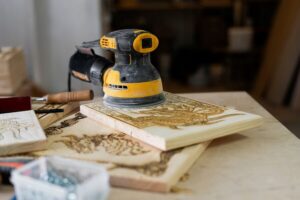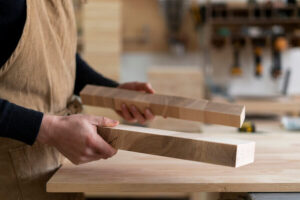Introduction to Engineered Wood
Engineered wood is a versatile and popular choice for various construction and interior design projects. Composed of multiple layers of wood or wood fibers bonded together with adhesives, engineered wood offers strength, stability, and dimensional consistency. When it comes to selecting the best material for engineered wood, several options are available, each with its unique characteristics and benefits.
Plywood: Strength and Versatility
Plywood is one of the most common materials used in engineered wood. It is constructed by gluing together thin layers of wood veneer with the grain of each layer perpendicular to the adjacent layer, resulting in a strong and stable panel. Plywood is renowned for its strength, durability, and versatility, making it suitable for a wide range of applications, including furniture, cabinetry, flooring, and structural framing. Additionally, plywood comes in various grades and thicknesses, allowing for flexibility in design and construction.
Particleboard: Cost-Effective Option
Particleboard is another popular material used in engineered wood. It is made from wood particles, such as sawdust and wood chips, bonded together with resin or adhesive under heat and pressure. Particleboard is an economical option compared to plywood or solid wood, making it ideal for budget-conscious projects. While particleboard may not offer the same strength and durability as plywood, it provides a smooth and uniform surface that is suitable for applications such as furniture, shelving, and cabinetry.
Medium-Density Fiberboard (MDF): Smooth and Uniform Surface
Medium-Density Fiberboard (MDF) is composed of wood fibers bonded together with resin or adhesive and compressed under high pressure. MDF offers a smooth and uniform surface that is ideal for painting, veneering, or laminating. It is commonly used in furniture, cabinetry, millwork, and decorative panels due to its affordability and versatility. While MDF may lack the structural strength of plywood, it provides a cost-effective option for projects where appearance and finish quality are paramount.
High-Density Fiberboard (HDF): Durable and Impact-Resistant
High-Density Fiberboard (HDF) is similar to MDF but with higher density and strength. It is commonly used in applications where durability and impact resistance are essential, such as laminate flooring, furniture components, and decorative panels. HDF provides a smooth and durable surface that is ideal for laminating or painting, making it suitable for high-traffic areas and demanding environments. While HDF may be more expensive than MDF, it offers superior performance and longevity.
Factors to Consider When Choosing the Best Material
When selecting the best material for engineered wood, several factors should be taken into consideration:
Budget
Consider your budget constraints and choose a material that offers the best balance between cost and performance.
Durability
Evaluate the durability and longevity of the material, especially if it will be subjected to moisture, impact, or other environmental factors.
Aesthetic Preferences
Take into account the appearance, texture, and finish of the material, ensuring it aligns with your design aesthetic and overall vision.
Environmental Considerations
Consider the environmental impact of the material, including its sustainability, recyclability, and potential for off-gassing or emissions.
Consulting with Professionals
If you’re unsure about which material is best for your project, don’t hesitate to consult with design professionals or wood experts. They can provide valuable insights, recommend suitable options based on your requirements, and ensure a successful outcome.




